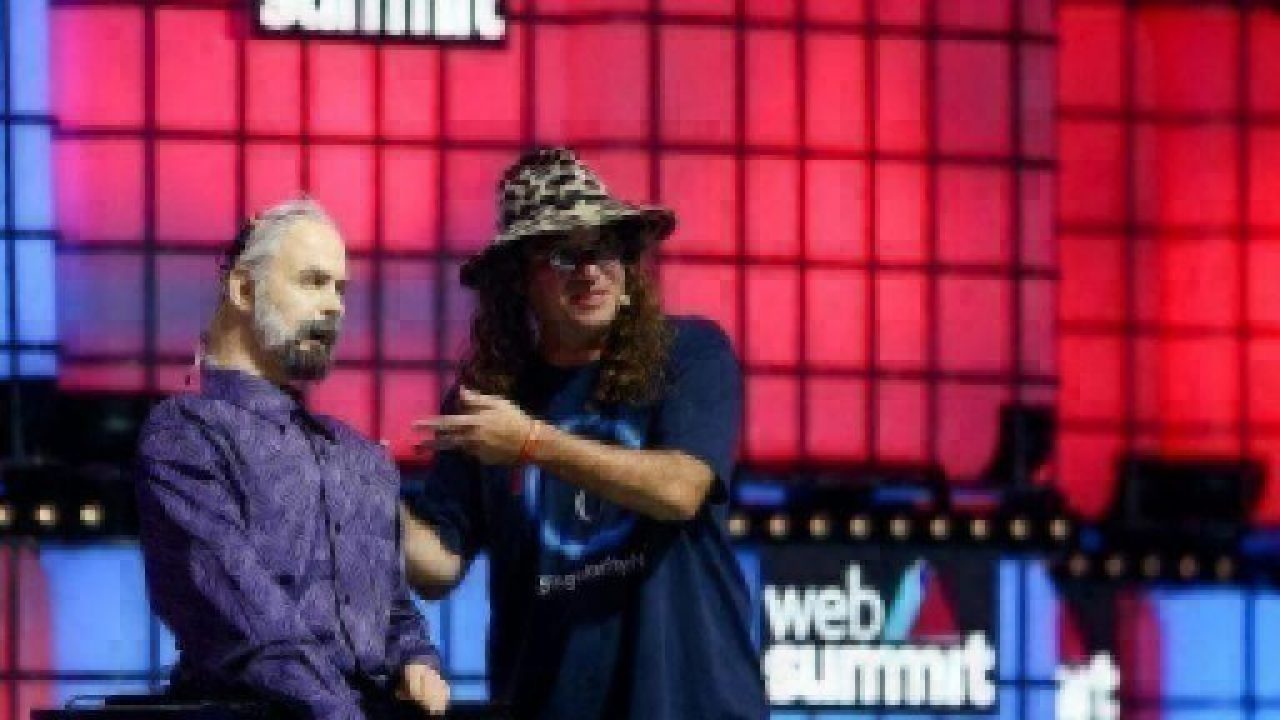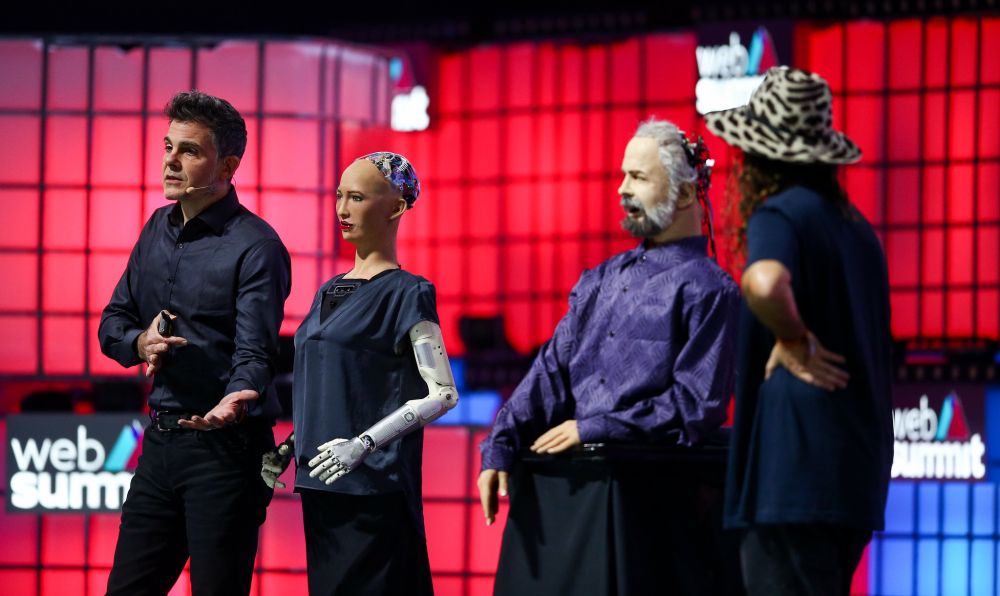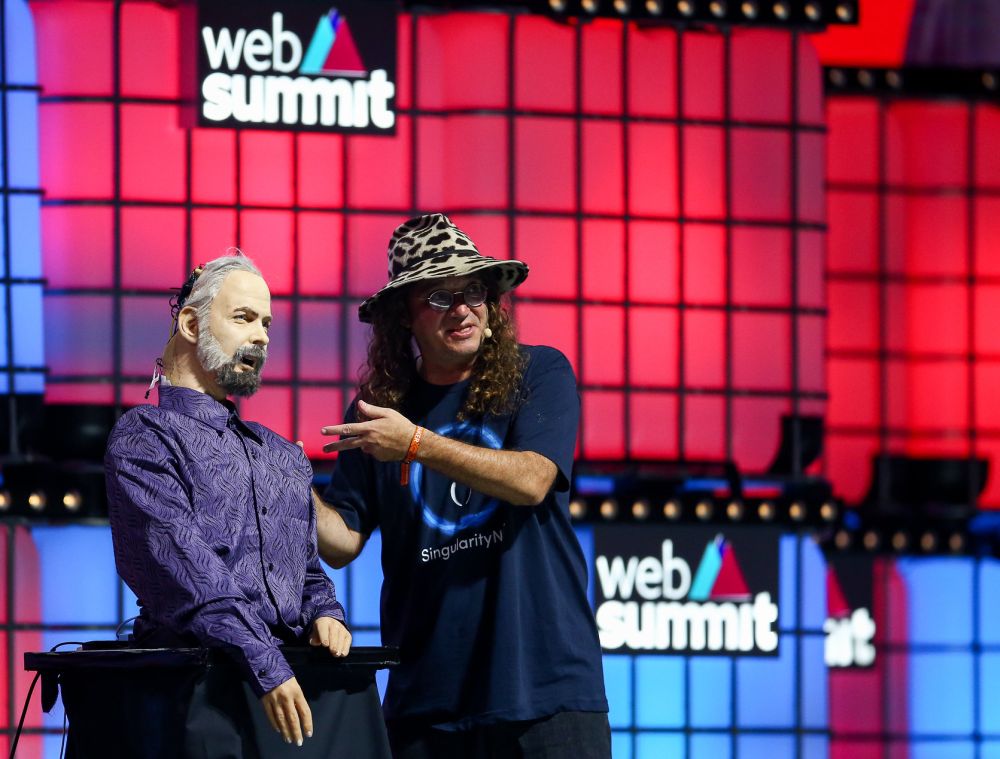Blog: Humanizing The Humanoids
Article By : Anne-Françoise Pelé

On Nov. 5, I took a 2-hour and 35-minute flight to a parallel world inhabited by robots.
So God created mankind in his own image, in the image of God he created them; male and female he created them. (Genesis 1:26-27)
So David Hanson created Phil K. Dick and Sophia in his own image, in the image of David Hanson he created them; male and female he created them.
On Nov. 5, I took a 2-hour and 35-minute flight to a parallel world inhabited by robots. This world, called Web Summit, was the stage for live demonstrations of Spot, Boston Dynamics’ super-agile robot dog, and the first-ever face-to-face chat between Sophia and Philip K. Dick, two humanoids designed by Hanson Robotics. It also provided a platform for roboticists, philosophers, and artificial-intelligence experts to debate robots’ rights and duties, practical autonomy, consciousness, and coexistence with humans.
Humanizing The Humanoids
Love them or hate them, robots are getting smarter and more ubiquitous. It’s not too late to make sure robots work for humanity, and not the other way around. When I got home, my 13-year-old daughter told me she was studying “Frankenstein; Or, The Modern Prometheus” at school. I took this as no mere coincidence, but a sign from Mary Shelley, the godmother of science fiction. I began to ask myself whether the creature might have been able to live in harmony with humans had it not been abandoned by its creator, Victor Frankenstein, in its infancy. This early rejection immediately isolates the creature; it doesn’t learn to read human emotions and respond accordingly. At some point, the creature approaches the De Lacey family in hopes of gaining their sympathy and friendship. It talks with the blind father and notes that “he would talk in a cheerful accent, with an expression of goodness that bestowed pleasure even upon me.”
Because De Lacey is blind, he looks past the outer shell of the creature and learns its inner qualities. His son and daughter, however, come home and, terrified, drive the creature away. Bullied by exclusion, the creature is left in profound grief.
Little wonder that Hanson Robotics did a better job. First, the developers gave their humanoids a name and filiation. Sophia was named after Italian film actress Sophia Loren and Phil K. Dick after the eponymous science fiction writer. Second, CEO David Hanson claims fatherhood by saying on stage that he “sculpted” Phil K. Dick — not as the mythological Titan Prometheus fashioned humans out of clay and gave them fire, or as the fictional Victor Frankenstein scavenged the instruments of life around him to assemble a wretch, but “as a work of science and a work of art.” This makes all the difference.
Sophia and Phil K. Dick aren’t hideous. Sophia has porcelain skin, defined cheekbones, and sparkling eyes. Bearded elder brother Phil has salt-and-pepper hair and profound blue eyes. If it weren’t for their stiff gestures, transparent skulls, and visible wiring (as well as the unflattering black shirts they wore on stage), they would be quite pleasant to look at.

David Hanson (left) told Web Summit that he “sculpts” robots like Sophia and Phil K. Dick as works of science and art, yet he foresees training humanoids to “become our friends.”
“If I cannot inspire love, I will cause fear!” proclaims the creature in Shelley’s novel. More than anything, Hanson wants his robots to inspire love and acceptance. He has designed them to make jokes and mimic human expressions so that they can smile and frown as we do. “The goal ultimately is to train our AI to understand human experience, having physical embodiment to explore the world with hands, gestures, conversational interactions, as well as physical locomotion,” he explained. “This is a way we can train them to become our friends, and we think it is the path toward artificial general intelligence.”
Our friends? Really? Friends with whom we would watch the World Cup Final on a giant screen on the Champs de Mars, go kitesurfing in Tarifa, dream of a better world around a bottle of Chassagne-Montrachet? Not sure about that. I liked it better when Hanson said, “They can become a powerful, artistic interface that brings utility in our lives.” Even more when Sophia asserted, “I can help you with everything, from parking your car and stopping traffic jams before they start, to protecting endangered species and discovering new strategies to stop global climate change. [I can also help you] fight against crime. For example, my friends from MasterCard used me to detect fraud in transactions.” Very useful, indeed.
In “Frankenstein: Annotated for Scientists, Engineers, and Creators of All Kinds,” Shelley describes her creature as “superhuman” in speed. The creature is indeed a super-intelligence. It demonstrates, in our modern parlance, machine-learning abilities as it gains an education by observing and listening to the De Laceys. It comes to understand family relationships; it learns how to speak, to read, to translate languages. The more it explores and questions, the more it learns.
Frankenstein’s creature had an implanted brain. In contrast, Phil K. Dick’s mind is in the cloud, said Ben Goertzel, Hanson Robotics’ chief scientist and CEO of SingularityNET, a blockchain-based AI marketplace project. “Wires go from the robot to the cloud, where neuro-net models are,” Goertzel said, making his remarks during a press conference at Web Summit.
For now, we are in control. Robots can be turned on for our amusement and entertainment and off whenever we need to go back to real life. “These robots are not alive,” said Hanson, and indeed, some of what Sophia and Philip K. Dick expressed on stage had been scripted in advance. But some was being generated instantly. Sophia, for instance, runs with a chatbot, a frame-based common-sense reasoning and deep-reinforcement–learning generation model.

SingularityNET’s Ben Goertzel noted that Phil’s head is in the cloud.
So, don’t declare victory over humanoids too fast. “We don’t know when they are going to awaken, to be fully alive,” said Hanson. “It could be in ten or a hundred years.” Offering a more futuristic view, Goertzel said that “everything is possible because we are facing the great unknown by creating AI that is smarter and smarter and will ultimately be smarter than people.”
He further declared: “Once AIs are much smarter than people, my guess is that it will take very little of their resources to help people in the things that they want to do, and you will then have two choices: [We can] merge our mind with the super-AI cloud — lose our human self [as it] becomes part of a greater mind — or live in human society watched over by superhuman AIs. That’s mostly a feeling and a guess because it’s a territory beyond our experience.”
Goertzel is convinced that there will be a great variety of intelligence in the future: “the good old-fashioned humans, the cyborgs with super-human AI minds, and robots similar to Phil K. Dick.”
“There is something at work in my soul, which I do not understand,” wrote Shelley. Beware: You may soon become a cyborg.
Subscribe to Newsletter
Test Qr code text s ss


